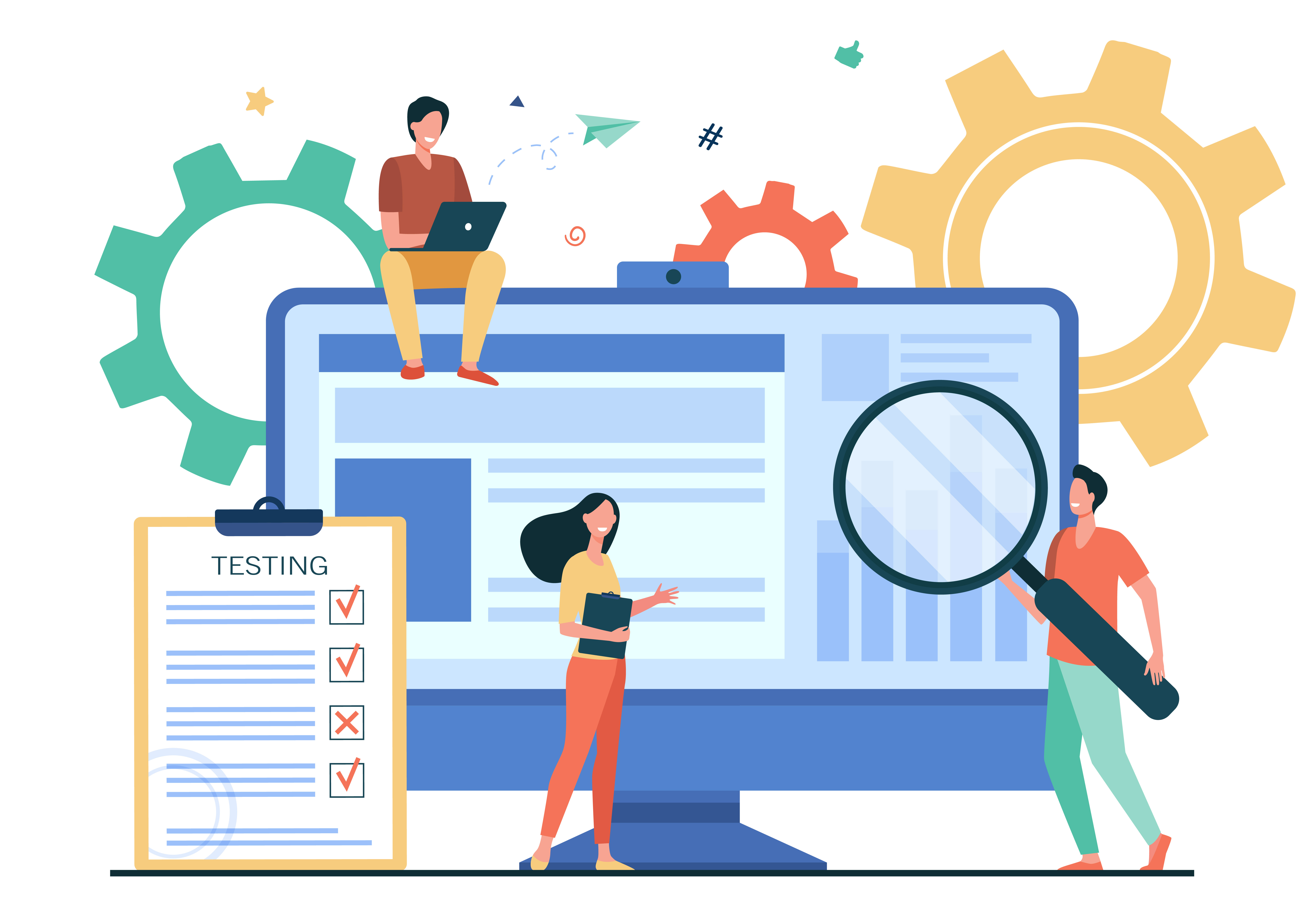Customer Service ROI: A Step-by-Step Comprehensive Guide for Success
Research has shown that it costs 5x more to acquire a new customer than it does to retain one. Read on to see why this statistic holds. Excellent customer service is one of the most important touchpoints in a customer’s journey and a powerful way of providing a great customer experience with your product or service, significantly impacting customer satisfaction, loyalty, and business ROI. Ignore or underestimate its value at your peril!
Quantifying the ROI (Return on Investment) of investments in your customer support function requires a holistic approach. ROI calculation provides a means of calculating what you stand to gain from investments in support agents, software, tools, and training for your team. The purpose is to accurately justify how and where monies should be spent to optimize the potential value of the investment for your business. Get this wrong, and you might end up with customer support processes that reduce employee productivity and the quality of the service provided, ultimately resulting in poor experiences for the end customer. So, how can you avoid this?
Calculating ROI of Customer Support AI
For the customer experience ROI calculator, organizations need to focus on quantitative indicators like the number of upgrades, renewals, retention rates, and recommendations. Companies will need to follow a couple of steps to calculate the ROI of customer support successfully. Understanding how to measure customer service ROI is crucial, as it involves using quantitative indicators and financial metrics to evaluate the success of customer support investments comprehensively.
Decision-makers must pay attention to the investment in customer support processes over a given period.
Identify and determine the specific financial metrics and other KPIs that will be measured. They also need to focus on how much was earned from the specific metrics that are decided on. Some metrics that can be measured include:
Customer upgrades: Organizations can calculate how many customers upgraded from a lower-tier to a higher-tier subscription or how many moved from a free trial to a paid subscription after interacting with support.
Customer retention: The number of monthly or annual renewals or re-purchases by existing customers can be measured. Companies can check if these existing customers have approached support or have been proactively approached by support to resolve any issues or questions.
Net Promoter Score (NPS): Companies can measure customer loyalty by looking at their Net Promoter Score. NPS shows the likelihood of customers recommending the company’s product or brand to others. This can be measured by simply asking the customer in a survey or even at the end of a support interaction. It can take the form of a 1 - 10 ratio with the question - “How likely are you to recommend our product or service to others?” To get the NPS, subtract the percentage of detractors from the percentage of promoters.
Employee productivity: Here, the focus is on how much time is saved by support agents due to resolving support tickets faster, solving support issues, and proactively reaching out to the customer before the issue is known. Companies can save money on manual labor, especially when support is supplemented with AI-powered software.
Test the defined measurements with new investments. Let’s take an example. A company invested in IrisAgent to boost its customer support processes. After implementation, the time to resolve support tickets decreased from 8 - 9 hours with possible engineering escalations to 1 hour without escalations. This improved time-to-ticket resolution, subsequently improving customer satisfaction scores and increased customer retention. Simple! This doesn’t factor in the new value created by reallocating precious engineering time to other essential tasks.
What are the business values of efficient customer support?
Increased Profits: Previously, customer support may have been considered a cost center. However, companies stand to increase their profits through customer support channels and interaction. Revenue can come from increased referral sales, low customer churn, and customer upgrades or cross-sells. Providing excellent customer support not only helps improve customers’ experience with the company’s products but also increases the likelihood of them wanting to buy more products or renew their subscriptions. They may even be open to paying more for the privilege! Understanding and managing customer service costs are critical factors in achieving increased profits through efficient customer support.
Saves time and resources: As investments in technology increase employee productivity, support agents will be able to resolve more support tickets more quickly – and even proactively resolve issues before they are known! Reducing the time to resolve tickets also eliminates the need to hire more support agents. By investing in effective technologies, support teams can also improve their processes and workflows with automation. They can quickly identify redundant processes and eliminate them. For example, IrisAgent’s automated tagging feature removes the need for manual categorization and tagging. Efficient customer support significantly impacts metrics like customer churn rate, illustrating the importance of reducing customer loss.
Long-term business relationships: Delightful customer support leads to long-term customers. This can increase a company’s Customer Lifetime Value (CLV). CLV is the total value of a customer to a business over the entire business relationship. Ideally, companies want to earn more from a customer over time so it covers the cost of getting the customer with additional profits. It is cheaper to retain customers than to acquire new ones. Thus, it makes sense to invest in building relationships with existing customers and keeping them satisfied and delighted with positive experiences.
The statistics say it all:
81% of companies that use customer experience as their differentiator reported an 84% increase in revenue, a 79% increase in cost savings, and a 92% increase in customer loyalty - Dimension Data.
By implementing AI-driven knowledge base tools, companies have improved the first-contact resolution by 5 - 7%, reduced handling time by 20% to 30%, and reduced new-hire training time by 25% to 40% - BCG.
The probability of selling to an existing customer is 60 – 70%, while the probability of selling to a new prospect is 5 - 20% - invesp.
As companies become more customer-centric and customers make ever more intentional buying decisions, it’s more important than ever for companies to proactively invest in improving their customer support processes. Effective modern software is a great place to start.
Challenges and Considerations in Measuring Customer Service ROI
Effectively measuring the return on investment (ROI) in customer service is essential, but it comes with specific challenges and considerations unique to business metrics and this dynamic field. Addressing these challenges ensures that the metrics accurately reflect the impact of customer service initiatives on business outcomes.
A. Balancing Efficiency and Effectiveness Metrics
Resolution Time vs. Customer Satisfaction:
Challenge: Emphasizing quick resolution times may conflict with ensuring high levels of customer satisfaction.
Consideration: Strike a balance by aligning efficiency metrics, like resolution time, with customer satisfaction scores. Acknowledge that a speedy resolution should not compromise the quality of customer interactions.
Quantifying the Value of Customer Loyalty:
Challenge: Quantifying the long-term value of loyal customers is intricate and extends beyond immediate transactional metrics.
Consideration: Implement customer lifetime value calculations, considering factors like repeat business, referrals, and brand advocacy. Utilize customer feedback and sentiment analysis to gauge loyalty and advocacy levels.
B. Navigating Multichannel Support Metrics
Consistent Metrics Across Channels:
Challenge: Standardizing metrics across diverse customer service channels (e.g., phone, chat, social media) can be challenging due to variations in interactions.
Consideration: Develop channel-specific metrics while maintaining consistency in measuring customer satisfaction and issue resolution effectiveness. Recognize the unique characteristics of each channel and tailor metrics accordingly.
Integrating Omnichannel Data:
Challenge: Integrating data from various touchpoints into a cohesive view is complex, impacting the ability to measure the end-to-end customer journey.
Consideration: Invest in omnichannel customer service platforms that enable seamless data integration. Ensure that metrics capture the entire customer journey, providing insights into interactions across channels.
C. Tackling Seasonal and Cyclical Variances
Impact of Seasonal Peaks:
Challenge: Seasonal fluctuations can significantly influence customer behavior and support demands, potentially skewing ROI metrics.
Consideration: Normalize data to account for seasonal variations. Implement forecasting models to predict peak periods, enabling proactive resource allocation and strategic planning.
Distinguishing External Influences:
Challenge: External factors, such as market trends or economic shifts, may impact customer behavior independently of customer service efforts.
Consideration: Conduct thorough analyses to differentiate between the effects of external influences and the impact of customer service initiatives. Adjust ROI calculations based on these distinctions.
D. Human Touch vs. Technological Efficiency
Balancing Automation and Personalization:
Challenge: Increasing automation for efficiency may risk diminishing the personalized touch in customer interactions.
Consideration: Strive for a balanced approach that leverages automation for routine tasks while preserving opportunities for personalized and empathetic human interactions. Monitor customer feedback to gauge the impact on satisfaction levels.
Training and Adaptation for Technology Adoption:
Challenge: Implementing new customer service technologies may face resistance, affecting metrics during the initial phases.
Consideration: Prioritize comprehensive training programs to ensure staff proficiency with new technologies. Implement phased rollouts to manage the transition smoothly, allowing time for adaptation and minimizing disruptions to customer service quality.
Addressing these specific challenges within the realm of the customer experience program and customer service ROI measurement is essential for organizations seeking accurate insights into the effectiveness of their customer service strategies. By tailoring considerations to the nuances of customer service, businesses can refine their measurement approaches and enhance the overall customer experience.
How to improve your customer service ROI?
Improving your customer service ROI (Return on Investment) involves optimizing your customer support operations to deliver efficient and effective service while managing costs. Here are several strategies to enhance your customer service ROI:
Data-Driven Decision Making:- Leverage customer data and analytics to identify trends, customer preferences, and areas for improvement. Use this information to make informed decisions that maximize the impact of your customer service efforts.
Process Efficiency:- Streamline your customer service processes to reduce response and resolution times. Implement automation and self-service options for routine inquiries to free up agent time for more complex issues.
Training and Skill Development:- Invest in training and skill development for your support agents. Equip them with the knowledge and tools to resolve issues effectively, reducing the need for escalations and repeat interactions.
Knowledge Base:- Maintain a comprehensive knowledge base, FAQs, and self-help resources to empower customers to find answers independently. This reduces the volume of support inquiries and lowers operational costs.
Proactive Issue Prevention:- Identify recurring customer issues and take proactive steps to prevent them through product or process improvements. By addressing root causes, you can reduce support costs.
Customer Satisfaction:- Prioritize customer satisfaction as satisfied customers are more likely to remain loyal, become new customers, make repeat purchases, and recommend your business. Good customer service is pivotal in achieving high customer satisfaction scores, which in turn significantly impacts ROI. Enhancing the customer service experience directly contributes to this by resolving daily challenges, leading to increased customer satisfaction and a higher return on investment in customer support. Track customer satisfaction scores (e.g., NPS or CSAT) and act on feedback to make improvements.
Customer Retention:- Focus on retaining existing customers, as it’s often more cost-effective than acquiring new ones. Invest in relationship-building and issue resolution to reduce churn.
Cost Monitoring:- Continuously monitor and manage support costs. Identify areas where you can reduce expenses without compromising service quality, such as optimizing staffing levels and reducing resource-intensive processes.
Agent Productivity:- Empower your support agents with the tools, training, and guidelines to improve their productivity. Productive agents can handle more inquiries with the same resources.
Implement Predictive Analytics:- Use predictive analytics to anticipate customer needs and potential issues. This proactive approach can reduce support costs by preventing problems before they occur.
IrisAgent takes customer support to a whole new level by using product and user context to identify trending issues and take proactive steps to resolve issues before they become problems. To get a demonstration of how you can get a substantial ROI from IrisAgent, request a demo today!
Frequently Asked Questions (FAQ) on Customer Service ROI
Why is measuring Customer Service ROI important for businesses?
Measuring Customer Service ROI is crucial because it provides tangible insights into the impact of customer service initiatives on business outcomes. It helps businesses quantify the value of their customer support efforts, make informed decisions, and align customer acquisition strategies with overall business goals.
What are some key performance indicators (KPIs) for measuring Customer Service ROI?
Key performance indicators include Customer Satisfaction Scores (CSAT), Net Promoter Score (NPS), resolution times, customer retention rates, and customer lifetime value. These metrics offer a comprehensive view of customer service effectiveness and its contribution to business success.
How can businesses balance efficiency and effectiveness in customer service metrics?
Striking a balance involves aligning metrics like resolution time with customer satisfaction scores. While efficiency is important, it should not compromise the quality of customer interactions. Consider customer feedback and sentiments to gauge both efficiency and effectiveness.
How can businesses measure the impact of customer lifetime value on ROI?
Quantifying the value of customer loyalty involves calculating the ROI of customer experience and lifetime value, considering repeat business, referrals, and advocacy. Additionally, utilize sentiment analysis and customer feedback to gauge the emotional connection and loyalty levels of customers.
How do businesses address the challenges of multichannel support metrics?
Businesses should standardize metrics across channels while acknowledging the unique characteristics and number of customers in each. Invest in omnichannel customer service platforms that facilitate seamless data integration, providing a holistic view of customer interactions across various channels.
What strategies can businesses employ to tackle seasonal and cyclical variances in customer retention metrics?
Normalize data to account for seasonal fluctuations and implement forecasting models to predict peak periods. Distinguish between the revenue impact of the effects of external influences and the impact of customer service initiatives through thorough analyses and adjustments in ROI calculations.
How can businesses balance automation and personalization in customer service?
Achieving balance involves leveraging automation for routine tasks while preserving opportunities for personalized and empathetic human interactions. Prioritize comprehensive training programs to ensure staff proficiency with new technologies during the adoption phase.
How frequently should businesses revisit their customer service ROI metrics?
Regular reviews are essential. Businesses should revisit their customer service ROI metrics at least quarterly, adapting strategies based on changing customer behaviors, industry trends, and the evolving landscape of customer service technologies.





